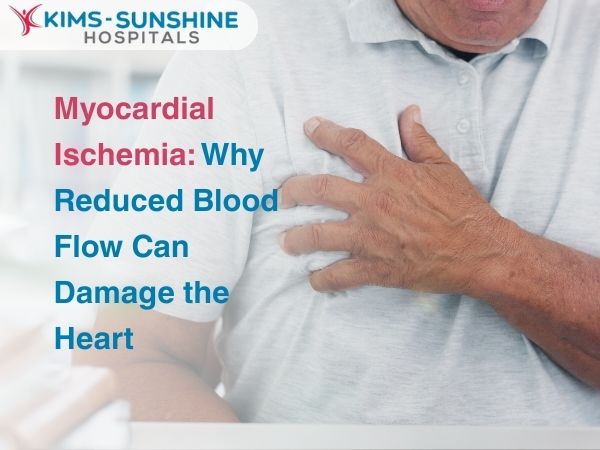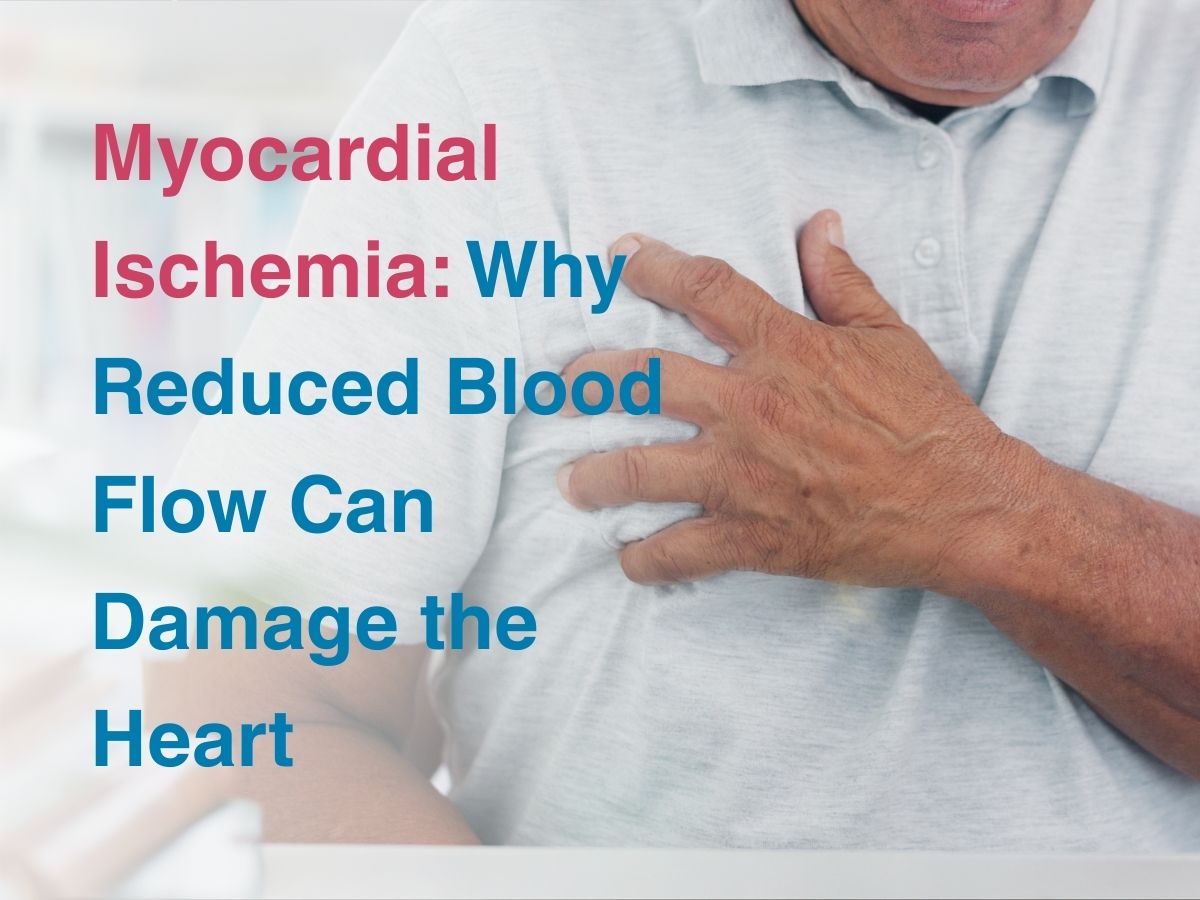
Myocardial ischaemia: Why Reduced Blood Flow Can Damage the Heart

The heart is a fist sized organ that keeps beating rhythmically, in your chest cavity, all day, every day- to ensure that blood gets pumped all over your body. All of this pumping is obviously done by highly specialised cardiac muscles, which require a lot of oxygen and energy themselves, so they can continue to function flawlessly. When someone has heart disease or is at risk of developing the condition, it can cause circulation to occur in a more disorganised manner. In India, the incidence of myocardial ischaemia is pretty high- almost 15% of the population under 45 years of age suffers from this, while having coronary artery disease too.
What is Myocardial Ischaemia?
When the muscles of your heart don’t get enough oxygen and nutrients, they don’t function in the way they should. If this blood flow or lack of oxygen and nutrients continues for more than a few minutes because the coronary arteries are affected, it can lead to a heart attack or myocardial infarction. About 25% of all such MI cases in India occur in individuals below 40 years of age. Myocardial ischaemia is a major cardiac event and must be treated like a medical emergency.
Causes of Myocardial Ischaemia
People who already have heart disease or suffer from chronic conditions like diabetes or hypertension are at high risk of suffering from this condition. Apart from these comorbidities, coronary artery disease can also be a major issue- caused due to buildup of plaques in major blood vessels, especially if the person has hypercholesterolemia. Some people may already have blood clots present in their system and that can block the artery off, causing reduced or even nil blood flow. Some people rarely have a coronary artery spasm, where circulation can get cut off for a few minutes. A coronary artery dissection is another emergency event that needs to be treated immediately, or the affected person can bleed to death in just a few minutes.
Symptoms of Cardiac Ischaemia
Most people report the following symptoms
- Chest pain and discomfort in general.
- Heartburn and a squeezing sensation
- Pain in the left arm, shoulder, that seems to hydrate downwards to the arm, from the chest.
- Some people may complain of neck or jaw pain- but this a much rarer symptom and is generally observed in women.
- Upper back pain may also be felt. Some people may feel a searing, tearing sensation near the chest and feel very faint or dizzy. This can be an aortic dissection, which is very dangerous.
- Some people may have prominent changes in heart rate- it can be too fast, faint or too irregular or even absent in extreme cases.
Diagnosis Of ischaemic Heart Disease
Apart from taking a detailed medical history and doing a physical examination, your doctor will recommend some cardiac specific tests- like an ECG, EKGand ask you to get continuous Holter monitoring done. You may also be asked to take a stress test, or an angiogram. An X-ray or cardiac MRI is done rarely and not often.
Simple blood tests can also be done to check for the level of troponins – if the amount is high, it means cardiac muscle damage occurred and you had a cardiac event. They can also tell the doctor if you are at risk of having an MI due to a clot or plaque.
Treatment for Myocardial Ischaemia
Doctors first look at the symptoms you are having and then check test results, to come up with a treatment plan. Most approaches include the use of medications- like nitroglycerin, which can help reduce chest pain intensity, clot busters, calcium channel blockers, beta blockers and related drugs. Surgical options may be explored if damage to arteries or cardiac components is too extensive- like the need for a stent to be placed or a CABG (coronary artery bypass graft).
Conclusion
People who have unstable angina- chest pain that does not get better even with medication are at high risk of having a heart attack in the next few months. Chest pain can last for up to 10 minutes, if it is due to myocardial ischemia. The best thing you can do is not take a chance and instead call for help. You can be in a safe setting and anticipate further testing and prompt treatment, once you are in the hospital.






